Express Concert: Ravel’s Le Tombeau de Couperin
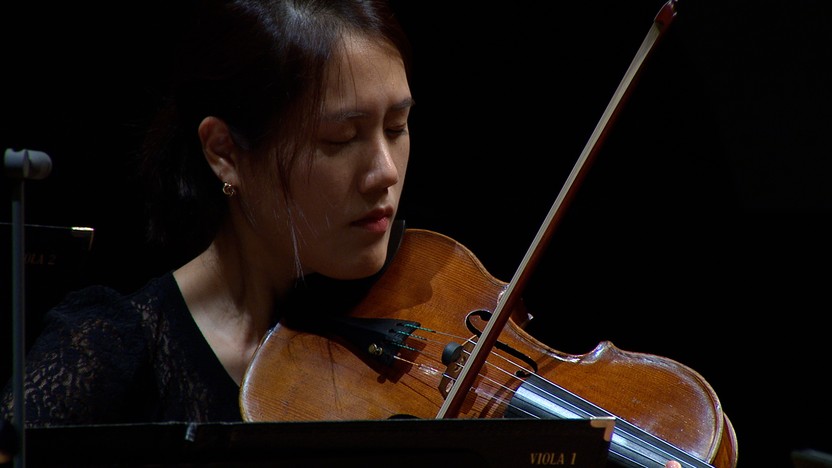

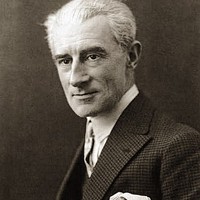
At the start of World War I, the 39-year-old Maurice Ravel volunteered as a truck and ambulance driver, forcing him to set aside Le Tombeau de Couperin, a work-in-progress for solo piano honoring the French Baroque composer François Couperin. By the time Ravel finished the suite in 1917, it had acquired a more personal meaning, with each of the six movements dedicated to friends killed in the war.
Ravel transcribed four of the movements for chamber orchestra in 1919, and those same four movements were the basis of this arrangement for woodwind quintet by Mason Jones. Ravel dedicated the fluid Prélude to Lieutenant Jacques Charlot (the godson of his music publisher), who died in battle in 1915. The second movement, a Forlane, is based on a lively and flirtatious couple’s dance that entered the French court via northern Italy. Ravel sketched this movement before the war and subsequently dedicated it to the Basque painter Gabriel Deluc, who was killed in 1916.
Ravel dedicated the Menuet (a French dance distinguished by its stately, three-beat pulse) to the memory of Jean Dreyfus, whose stepmother, Fernand Dreyfus, was one of Ravel’s closest confidantes during the war. The Rigaudon pays tribute to two family friends of Ravel: Pierre and Pascal Gaudin, brothers killed by the same shell on their first day at the front in 1914.
Aaron Grad ©2024
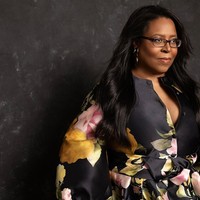
The multitalented Valerie Coleman first gained renown as a flutist and founder of Imani Winds. She is also an educator at the University of Miami’s Frost School of Music and an advocate for young and diverse artists through a variety of organizations, and in recent years she has experienced a meteoric rise as a composer, with commissions pouring in from major orchestras around the country. For all these reasons and more, Performance Today summed up Coleman’s impact by naming her the 2020 Classical Woman of the Year.
A program note on her publisher’s website describes the 2008 flute solo Danza de la Mariposa as “a rhythmic, melodic tone poem, giving the listener a tour of South America. Inspired by the various species of butterflies inhabiting the continent, this work is full of rich color, with butterflies dancing and weaving in syncopated rhythms. Its slower sections pay homage to the beautiful and sorrowful sounds in the style of Yaravi, a Peruvian lament song. The melodies and rhythm eventually evolve into the spirit and syncopation of Argentinean concert tango, and the conclusion returns to the feel of Yaravi.”
Aaron Grad ©2024
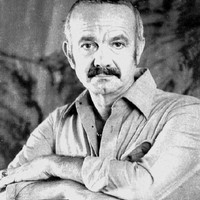
Born in Argentina, Ástor Piazzolla spent much of his childhood in New York. At age eight he took up the bandoneón, a South American folk instrument in the accordion family, and when he moved back to Buenos Aires as a teenager he played in traditional tango orchestras. Piazzolla went on to win a scholarship to study composition in Paris with Nadia Boulanger, who encouraged Piazzolla to stay true to his tango style. Upon hearing one of his original tangos, she exclaimed, “This is Piazzolla! Don’t ever leave it!”
Piazzolla became the driving force behind a style known as Nuevo Tango, or “New Tango.” Starting in the early 1960s, he formed bands that included electric instruments, and he brought classical rigor to his compositions, whether written for his own concert tours or his many film scores. He recorded Oblivion with a string orchestra for the soundtrack of Marco Bellocchio’s 1984 film Henry IV, and it has since appeared in many other arrangements, including this version by Robert Longfield.
Aaron Grad ©2024

Adolphus Hailstork, now in his eighties, is finally enjoying the recognition he has long deserved for the half-century’s worth of exceptionally attractive compositions in his catalog. For much of that time, he was teaching at colleges in Virginia, first at Norfolk State University and then Old Dominion University, where he still holds a post as Professor of Music and Eminent Scholar.
Hailstork first sketched material for these Romances in the 1980s, and he completed the matched pair of slow movements in 1997 for the Virginia Symphony based in Norfolk, with a dedication to principal violist Beverly Baker and music director JoAnn Falletta. The first Romance, marked Moderato, creates its peaceful atmosphere by weaving long strands of modal melodies over static harmonies.
Addressing his current “renaissance” and the increased attention paid to him as a Black composer since 2020, Hailstork wrote in an email interview, “Race is race. American problems go on forever. I have seen ups and downs, now is slightly up. It is not me getting attention but some pieces I wrote 30 or more years ago. And a few new ones. Whatever the biases and conditions, the work exists and I will continue working.”
Aaron Grad ©2024
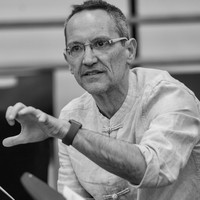
Astor Piazzolla, the last great Tango composer, was at the peak of his creativity when a stroke killed him in 1992. He left us, in the words of the old tango, "without saying goodbye," and that day the musical face of Buenos Aires was abruptly frozen. The creation of that face had started a hundred years earlier from the unlikely combination of African rhythms underlying gauchos' couplets, sung in the style of Sicilian canzonettas over an accompanying Andalucian guitar. As the years passed all converged towards the bandoneon: a small accordion-like instrument without keyboard that was invented in Germany in the 19th century to serve as a portable church organ and which, after finding its true home in the bordellos of Buenos Aires' slums in the 1920s, went back to Europe to conquer Paris' high society in the 1930s. Since then, it reigned as the essential instrument for any Tango ensemble.
Piazzolla's bandoneon was able to condense all the symbols of tango. The eroticism of legs and torsos in the dance was reduced to the intricate patterns of his virtuoso fingers (a simple C major scale in the bandoneon zigzags so much as to leave an inexperienced player's fingers tangled). The melancholy of the singer's voice was transposed to the breathing of the bandoneon's continuous opening and closing. The macho attitude of the tangueros was reflected in his pose on stage: standing upright, chest forward, right leg on a stool, the bandoneon on top of it, being by turns raised, battered, caressed.
I composed Last Round in 1996, prompted by Geoff Nuttall and Barry Shiffman. They heard a sketch of the second movement, which I had written in 1991 upon hearing the news of Piazzolla's stroke, and encouraged me to finish it and write another movement to complement it. The title is borrowed from a short story on boxing by Julio Cortázar, the metaphor for an imaginary chance for Piazzolla's spirit to fight one more time (he used to get into fistfights throughout his life). The piece is conceived as an idealized bandoneon. The first movement represents the act of a violent compression of the instrument and the second a final, seemingly endless opening sigh (it is actually a fantasy over the refrain of the song My Beloved Buenos Aires, composed by the legendary Carlos Gardel in the 1930s). But Last Round is also a sublimated tango dance. Two quartets confront each other, separated by the focal bass, with violins and violas standing up as in the traditional tango orchestras. The bows fly in the air as inverted legs in crisscrossed choreography, always attracting and repelling each other, always in danger of clashing, always avoiding it with the immutability that can only be acquired by transforming hot passion into pure pattern.
Osvaldo Golijov ©1996
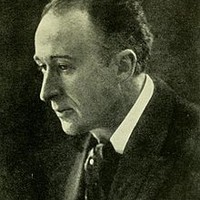
The music of Frederick Delius deserves more attention than it gets today, but this distinctly multinational composer is hard to shoehorn into any one of the national “schools” that dominated his prime years. His German-born parents had taken British citizenship by the time their son Fritz was born (he later Anglicized his name to Frederick), so by matter of birth Delius belongs among that class of late Romantic composers who revived British music, including Edward Elgar, Ralph Vaughan Williams and Gustav Holst. As per his father’s wishes, Delius apprenticed at various wool outlets around Europe, but he did not take to the family business; instead he embarked on a plan to grow oranges near Jacksonville, Florida, where Black musical traditions made a lasting impact on the aspiring composer.
Delius finally won his father’s blessing to study music in Leipzig, Germany, where he befriended the budding Norwegian star Edvard Grieg, leading to pivotal performances of Delius’ early music in Norway. Delius settled next in Paris, where he associated with Gabriel Fauré and Maurice Ravel, and then after marrying a German artist he moved to the French village where he spent most of his remaining decades.
On Hearing the First Cuckoo in Spring was composed second but published first in a set of Two Pieces for Small Orchestra from 1912. With its inviting harmonies, cuckoo calls and a gorgeous Norwegian folksong as its secondary theme, this tone poem has always been a highlight of Delius’ underappreciated catalog.
Aaron Grad ©2024
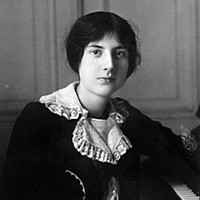
Following the path of both her parents and her older sister, Nadia, Lili Boulanger took up piano and composition from a young age. She went on to study at the Paris Conservatory, and in 1913 she made history as the first woman to win the prestigious Prix de Rome, a competition that provided winners a fellowship to live and compose in Rome.
In 1917, when Boulanger wrote D’un matin de printemps (On a Spring Morning) for flute (or violin) with piano, she was still refining a compositional voice that integrated the insistent rhythms of Igor Stravinsky with the gauzy harmonies of Claude Debussy. She died from tuberculosis just a year later, at the age of 24.
Aaron Grad ©2024
Our Express Concerts are 60-75 minutes of music without intermission. Learn more at thespco.org/express.
Get driving directions and find nearby parking.
Find dining options close to the venue.
View seating charts to find out where you'll be seating.
Get driving directions and find nearby parking.
Find dining options close to the venue.
View seating charts to find out where you'll be seating.
